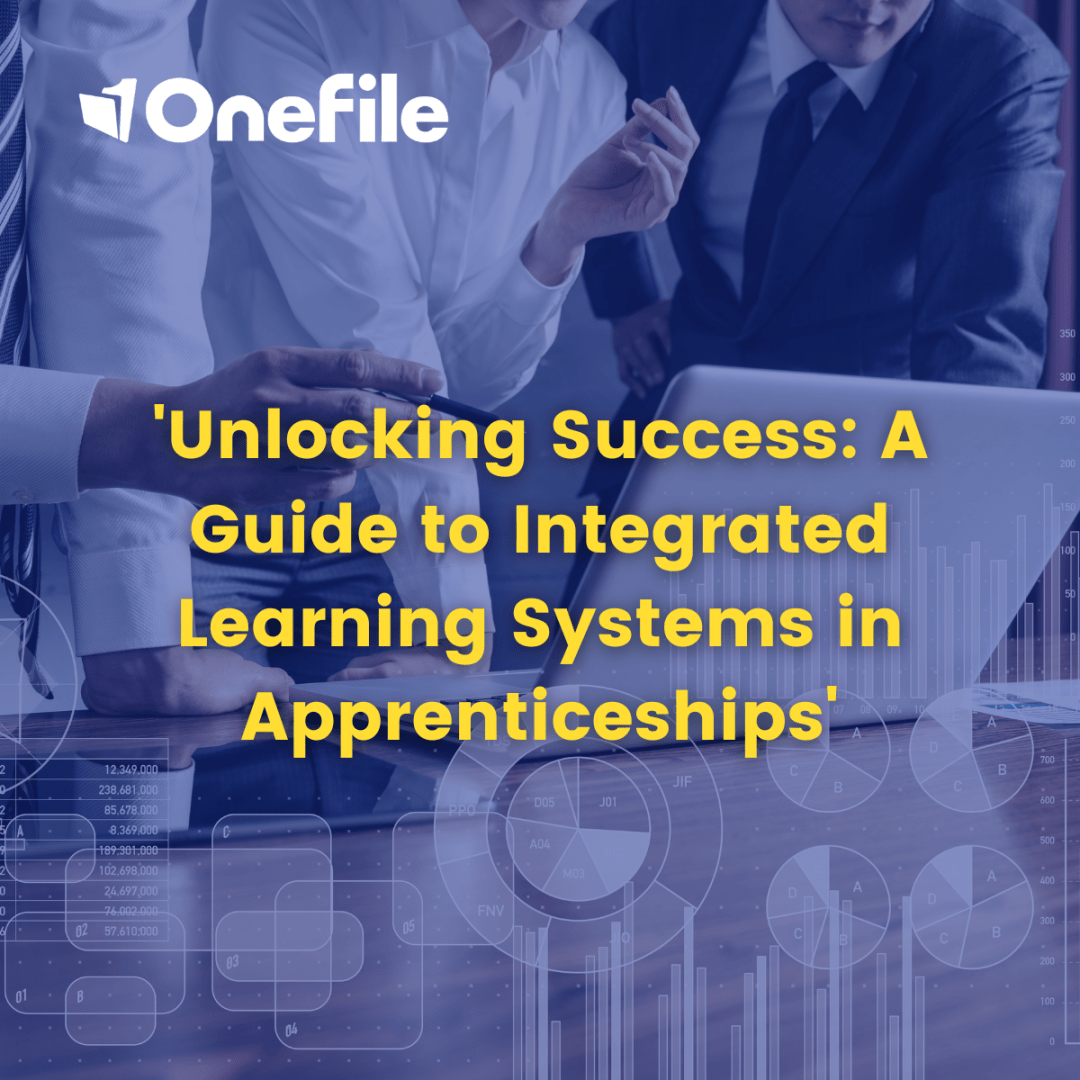Unlocking Success: A Guide to Integrated Learning Systems in Apprenticeships

An effective integrated learning system (ILS) is vital in giving the learner the support they need to complete their apprenticeship.
Now more sophisticated than ever, your ILS is the indispensable toolkit that helps join the dots between the apprentice, their training provider and their employer, from recruitment right through to the end point assessment (the ‘EPA’ - we have a blog on that too).
So, first things first, let’s explain exactly what we mean by ‘integrated learning system’. It's a clever technology that links computing systems and the different pieces of software designed to both create the learning experience and then ensure its successful.
In plain terms, when we talk about ‘success’ here, we mean a completed apprenticeship.
Broadly speaking, there are three ‘parties’ involved in an apprenticeship:
- The learner
- The training provider
- The employer
An ILS is a toolkit that makes it easier and more straight forward for all parties.
What tools are we talking about here?
To set the scene, let’s cast our minds back to when training was delivered on paper. All assessments, HR forms and management reports were completed on different pieces of paper, filed in different folders and stored in different offices across the country. How did we ever manage?
Technology, of course, changed all of this. Tech solutions were created to make the various tasks involved in an apprenticeship easier to carry out. The ILS makes sure the different solutions work together in harmony, saving time and duplication, and minimising costs and mistakes.
So, to answer the question, these are some of the tools that can make up the ILS toolkit:
- EPortfolio - all training can now be planned, completed, tracked and assessed electronically. Creating a digital portfolio encourages students to take responsibility for their learning and showcases that learning with others.
- Learning hub - this software application is all about engagement. Employers and tutors can work together to support the learner throughout their journey.
- Virtual learning environment - this is where you replicate your school or college's learning environment. This would be in a cloud-based solution online. 'Virtual' refers to the online nature of the platform, making it accessible via the internet from anywhere.
- Timesheets - apprentices submit entries when they complete work or attend sessions, so it’s easy to track the time spent training on and off the job. Employers, tutors, and learners have full visibility – which is great for Ofsted and quality audits.
- MIS solution - a management information system (MIS) is used by training providers to manage their apprenticeship programmes, giving them oversight of training delivery and the progress of their learners.
Now, thanks to the modern wonders of technology, the learner can easily learn and record their progress in various ways and keep their tutor or employer up to date 24/7. The tutor can deliver the training, remotely, if necessary, in a range of formats to suit the apprentice’s learning preferences. And the employer with several apprentices on their books can keep tabs on them all through a system that pulls it all together.
An ILS makes sure these different pieces of software, all with their own jobs to do, talk to each other. And what are the top five benefits of integrated learning systems, we hear you ask?
They are:
- One-time data entry - save hours by needing to only input an apprentice’s data once. When a connection has been made, information is duplicated automatically and pulled through for reports. This means you'll always have the information you need when you need it.
- Eliminate mistakes - human error is a fact of life, so when you're copying data from one system to another it's easy to miss a number or letter. Even the smallest mistake could have a big impact on learner reports and submissions, so, crucially, the outcomes of management assessments, productivity reports and even learner grades.
- Real-time results - transferring data takes time, but by integrating your learning systems, everything is synced automatically. Personal details, learner evidence, assessor feedback and planned tasks can be pulled through from your EPortfolio to your MIS solution, allowing you to generate detailed reports in real-time.
- Spot a pattern - by integrating your learning portfolio with a CPD tracker, HR hub or MIS solution you can monitor the progression of your staff and learners using one software. By correlating all data, managers can spot patterns easily and make changes to optimise training requirements and productivity across the board.
- Cost savings - integrating learning systems cut costs on administration time, travel time, printing and software upkeep, allowing you to invest more of your budget in the things that matter – like delivering high-quality training.
There we have it, a whistle-stop tour through the world of integrated learning systems. If you’re interested in finding out why OneFile is the UK’s leading provider of integrated learning systems for apprenticeships, click below.
This article includes research and opinion sourced by OneFile at the time of publication. Things may have changed since then,
so this research is to be used at the reader's discretion. OneFile is not liable for any action taken based on this research.

